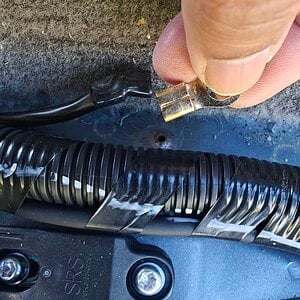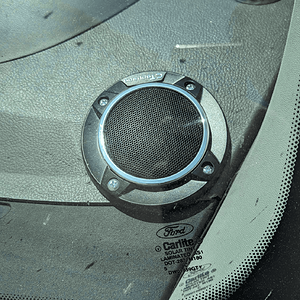Greg200SE-R 10+ year member
Member
Introduction
First of all, I’m not a professional, just someone who used to be obsessive about mobile audio. So, please forgive any misuse of terms or definitions. Digital time alignment (abbreviated as TA) was the driving force behind my first active system. Based on recommendations by this forum, I put together a laptop-based measurement setup to help with setting time delays.
Long story short, I was never satisfied with the results. I put away the microphone and cables, and decided to use a different set of measuring devices: my ears. I experimented for weeks, and developed a way to set TA by listening for specific cues. The results were fantastic. The reason my method, with practice, will achieve better time alignment than any sophisticated measurement system is simple: it’s customized to every individual, and their vehicle interior.
With correct application, this method achieves immediate improvements in imaging, staging, impact, and transparency. Bass should become thinner, but in a good way - lean, with great impact. The sub-bass shouldn’t come from the back of the car, or even up front – it should be completely unlocalizable. Midbass should be solidly up front along with the rest of the center image.
TA will be calibrated:
The method costs nothing but time and patience. An audio file of pink and white noise will be used for tuning and can be downloaded free here: Burn-in wave files: white noise, pink noise, frequency sweep, channel mix
The method assumes that your system is an active one, with each channel individually adjustable for time delay. It is developed and written for a 2-way front stage with a mono subwoofer channel and no rear speakers, though it can adapted for any other active system, no matter how many channels. Note that there is only one sweet spot per calibration.
Here’s a preview of the method for a typical 3-way system:
While playing pink and/or white noise through system,
Notice that alignment takes place between 2 non-like drivers at a time (sub/mid, mid/tweeter), and verification is done using like drivers (both mids, or both tweeters).
_______________
The key to the process: what to listen for
The key to the entire process is listening for specific sounds which indicate when 2 given drivers are close to being in phase. Initially recognizing these sounds is difficult, but once you understand what to listen for, calibration will become easier and quicker. Here's a quick summary: 2 drivers play the same noise track and their outputs interact. Anything out-of-phase will cause harmonics. The harmonics will exhibit the Doppler Effect when time delay approaches the correct range. At the "center" of the Doppler Effect, harmonics disappear, which means out-of-phase information is at its minimum; the drivers are in phase.
Here it is in more detail. During tuning, pink and/or white noise will be playing loudly on 2 drivers at a time, and the noise will basically fill your interior..
a) The pitch of the harmonics will increase, peak, and then decrease (Like the typical Doppler Effect) --OR--
b) The pitch of the harmonics will decrease, bottom out (the trough), and then increase again (Like an “inverse” Doppler Effect)
Prep for tuning:
Save your current settings to memory. Since calibration will be done from your normal driving position, have your remote control handy, or make sure you can reach your controls while keeping your head steady and facing straight ahead. A battery charger would come in handy. TA is ideally set with the engine off, to make subtle sounds easier to hear. Make use of the charger (or drive the car) after tuning.
In your car, disable all filters/XOs external to your main DSP (stuff like on-amp filters, phase switches, bass controls, etc.). If you haven’t already, set your crossover points and slopes, and set your amp levels. Zero out all time delays and get your pink noise track ready to go, with the player set to repeat the track.
First of all, I’m not a professional, just someone who used to be obsessive about mobile audio. So, please forgive any misuse of terms or definitions. Digital time alignment (abbreviated as TA) was the driving force behind my first active system. Based on recommendations by this forum, I put together a laptop-based measurement setup to help with setting time delays.
Long story short, I was never satisfied with the results. I put away the microphone and cables, and decided to use a different set of measuring devices: my ears. I experimented for weeks, and developed a way to set TA by listening for specific cues. The results were fantastic. The reason my method, with practice, will achieve better time alignment than any sophisticated measurement system is simple: it’s customized to every individual, and their vehicle interior.
With correct application, this method achieves immediate improvements in imaging, staging, impact, and transparency. Bass should become thinner, but in a good way - lean, with great impact. The sub-bass shouldn’t come from the back of the car, or even up front – it should be completely unlocalizable. Midbass should be solidly up front along with the rest of the center image.
TA will be calibrated:
- Using your own ears
- Taking into account your own hearing (the same sound is heard differently by everybody... and much more so by microphones)
- With your head in your everyday driving/listening position
- Taking into account all in-cabin reflections and absorptions, including your own body’s effects
The method costs nothing but time and patience. An audio file of pink and white noise will be used for tuning and can be downloaded free here: Burn-in wave files: white noise, pink noise, frequency sweep, channel mix
The method assumes that your system is an active one, with each channel individually adjustable for time delay. It is developed and written for a 2-way front stage with a mono subwoofer channel and no rear speakers, though it can adapted for any other active system, no matter how many channels. Note that there is only one sweet spot per calibration.
Here’s a preview of the method for a typical 3-way system:
While playing pink and/or white noise through system,
- Isolate sub and passenger side midbass (mute all other channels). Align drivers.
- Isolate sub and driver side midbass. Align drivers.
- Isolate driver and passenger midbasses. Verify time alignment and center image.
- Isolate passenger side midbass and tweeter. Align drivers.
- Isolate driver side midbass and tweeter. Align drivers.
- Isolate driver and passenger tweeters. Verify tweeter alignment and center image.
- Verify front stage alignment.
- Normal up the system and evaluate.
Notice that alignment takes place between 2 non-like drivers at a time (sub/mid, mid/tweeter), and verification is done using like drivers (both mids, or both tweeters).
_______________
The key to the process: what to listen for
The key to the entire process is listening for specific sounds which indicate when 2 given drivers are close to being in phase. Initially recognizing these sounds is difficult, but once you understand what to listen for, calibration will become easier and quicker. Here's a quick summary: 2 drivers play the same noise track and their outputs interact. Anything out-of-phase will cause harmonics. The harmonics will exhibit the Doppler Effect when time delay approaches the correct range. At the "center" of the Doppler Effect, harmonics disappear, which means out-of-phase information is at its minimum; the drivers are in phase.
Here it is in more detail. During tuning, pink and/or white noise will be playing loudly on 2 drivers at a time, and the noise will basically fill your interior..
- The 2 seperate outputs will interact, and phase incoherencies will show up as subtle harmonics within the pink noise.
- The harmonics will be at a much lower level than the 2 direct signals, and are difficult to detect. The goal is to identify and reduce these harmonics/phase problems to a minimum.
- As time delay is adjusted, the harmonics will rise and fall in pitch. The changes in pitch will sound random at first, but repeatable patterns will appear.
- As the drivers approach correct time alignment, the harmonics will exhibit the recognizable sound of the Doppler Effect.
- The Doppler Effect will present itself in one of two ways, depending on which 2 drivers are being aligned, and their relative levels:
a) The pitch of the harmonics will increase, peak, and then decrease (Like the typical Doppler Effect) --OR--
b) The pitch of the harmonics will decrease, bottom out (the trough), and then increase again (Like an “inverse” Doppler Effect)
- In either case, when the Doppler Effect is at its extreme (the precise peak or trough), the harmonics/phase problems are at their lowest level, and the 2 drivers are in optimal phase.
- Note: As delay is increased from 0ms upward, there are multiple occurrences of the Doppler Effect. The target is the FIRST one to present itself starting from zero delay.
Prep for tuning:
Save your current settings to memory. Since calibration will be done from your normal driving position, have your remote control handy, or make sure you can reach your controls while keeping your head steady and facing straight ahead. A battery charger would come in handy. TA is ideally set with the engine off, to make subtle sounds easier to hear. Make use of the charger (or drive the car) after tuning.
In your car, disable all filters/XOs external to your main DSP (stuff like on-amp filters, phase switches, bass controls, etc.). If you haven’t already, set your crossover points and slopes, and set your amp levels. Zero out all time delays and get your pink noise track ready to go, with the player set to repeat the track.
Last edited by a moderator:


